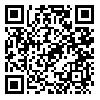Volume 34, Issue 1 (3-2025)
JGUMS 2025, 34(1): 80-91 |
Back to browse issues page
Research code: 1465
Ethics code: IR-ARUMS-REC-1398-484
Download citation:
BibTeX | RIS | EndNote | Medlars | ProCite | Reference Manager | RefWorks
Send citation to:



BibTeX | RIS | EndNote | Medlars | ProCite | Reference Manager | RefWorks
Send citation to:
Ghadehri K, Jafarnezhadgero A, fakhri Mirzanag E, Dehghani M. Effect of Long-term Sand Training on the Electrical Activity of Lower Limb Muscles in Men With Foot Pronation During Walking: A Randomized Clinical Trial. JGUMS 2025; 34 (1) :80-91
URL: http://journal.gums.ac.ir/article-1-2677-en.html
URL: http://journal.gums.ac.ir/article-1-2677-en.html
1- Department of Sport Biomechanics, Faculty of Educational Sciences and Psychology, University of Mohaghegh Ardabili, Ardabil, Iran.
Abstract: (1498 Views)
Background Foot pronation is one of the risk factors for lower limb injuries during running and walking. It seems that sand training can be a promising intervention for treating foot pronation.
Objective This study aimed to investigate the effect of long-term sand training on the electrical activity of lower limb muscles during walking in men with foot pronation.
Methods This is a randomized clinical trial. Participants were 60 men with foot pronation, randomly divided into control (n=30) and training (n=30) groups. The training group performed walking, running, and jumping exercises on the sands of Shourabil Lake in Ardabil, Iran, for 8 weeks, three sessions per week, each for 40-50 minutes. An 8-channel electromyography (EMG) device was used to record EMG data. Statistical analysis was done using repeated measure ANOVA in SPSS software, version 23.
Results During the loading response phase of gait, the effect of time was significant on the frequency of tibialis anterior (P=0.043) and biceps femoris (P=0.034) activity. Their activity was higher in the post-test phase compared to the pre-test phase. During the mid-stance phase, the effect of time was significant on the frequency of the rectus femoris (P=0.019), which was lower in the post-test phase compared to the pre-test phase. During the push-off phase, the effect of time was significant on the frequency of the vastus lateralis (P=0.000), which was lower in the post-test phase compared to the pre-test phase.
Conclusion In men with foot pronation, long-term training on sand can increase the activity of the tibialis anterior and the biceps femoris in the loading response phase, reduce the activity of the rectus femoris in the mid-stance phase, and reduce the activity of the vastus lateralis in the push-off phase of gait.
Objective This study aimed to investigate the effect of long-term sand training on the electrical activity of lower limb muscles during walking in men with foot pronation.
Methods This is a randomized clinical trial. Participants were 60 men with foot pronation, randomly divided into control (n=30) and training (n=30) groups. The training group performed walking, running, and jumping exercises on the sands of Shourabil Lake in Ardabil, Iran, for 8 weeks, three sessions per week, each for 40-50 minutes. An 8-channel electromyography (EMG) device was used to record EMG data. Statistical analysis was done using repeated measure ANOVA in SPSS software, version 23.
Results During the loading response phase of gait, the effect of time was significant on the frequency of tibialis anterior (P=0.043) and biceps femoris (P=0.034) activity. Their activity was higher in the post-test phase compared to the pre-test phase. During the mid-stance phase, the effect of time was significant on the frequency of the rectus femoris (P=0.019), which was lower in the post-test phase compared to the pre-test phase. During the push-off phase, the effect of time was significant on the frequency of the vastus lateralis (P=0.000), which was lower in the post-test phase compared to the pre-test phase.
Conclusion In men with foot pronation, long-term training on sand can increase the activity of the tibialis anterior and the biceps femoris in the loading response phase, reduce the activity of the rectus femoris in the mid-stance phase, and reduce the activity of the vastus lateralis in the push-off phase of gait.
Review Paper: Research |
Subject:
Special
Received: 2024/01/24 | Accepted: 2024/07/30 | Published: 2025/04/1
Received: 2024/01/24 | Accepted: 2024/07/30 | Published: 2025/04/1
| Rights and permissions | |
 |
This work is licensed under a Creative Commons Attribution-NonCommercial 4.0 International License. |









